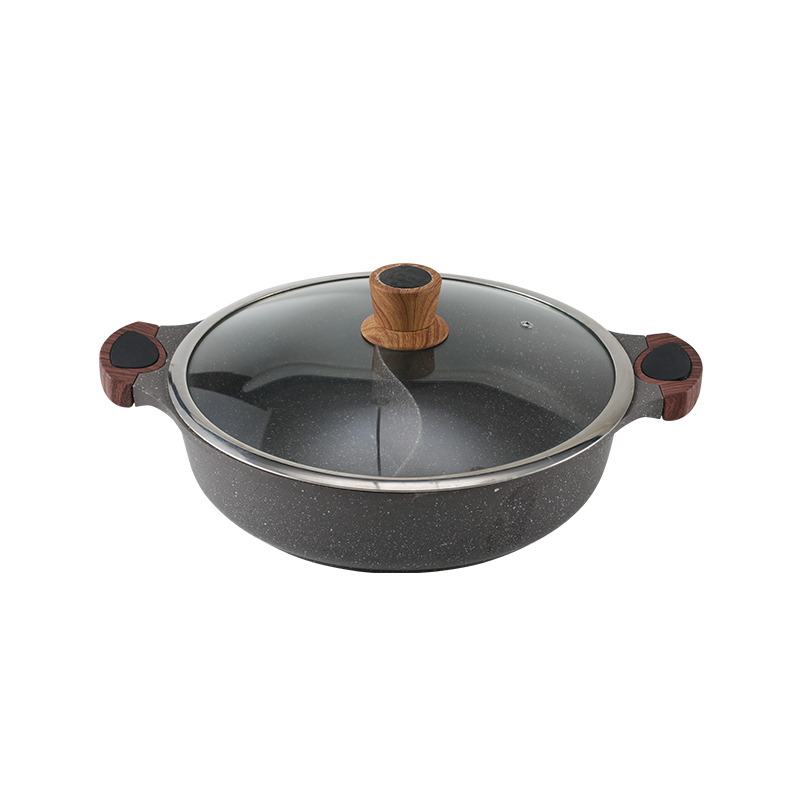How Is Aluminum Die Cast Cookware Manufactured and Is It Safe?
May 15, 2025
Aluminum Die Cast Cookware is a popular choice in the kitchen for its durability, heat conductivity, and lightweight nature. The manufacturing process of Aluminum Die Cast Cookware involves several steps, each contributing to the final product's quality and safety.

Step 1: Design and Mold Creation
The journey of Aluminum Die Cast Cookware begins with the design phase. Engineers create precise designs that take into account the cookware's intended use and the stresses it will endure. Once the design is finalized, a mold is created. This mold is crucial as it determines the shape and detail of the Aluminum Die Cast Cookware. The mold is typically made from metal and is designed to withstand high pressures and temperatures.
Step 2: Aluminum Die Casting Process
The actual manufacturing of Aluminum Die Cast Cookware involves the die casting process. Molten aluminum is heated to temperatures around 650-750°C (1200-1400°F). This molten aluminum is then poured into the mold, which is kept at a high temperature to ensure the metal flows smoothly into every detail of the mold. The pressure applied during this process can be as high as several hundred bars, ensuring that the Aluminum Die Cast Cookware has a dense and uniform structure.
Step 3: Cooling and Ejection
After the Aluminum Die Cast Cookware has been filled with molten aluminum, it is allowed to cool within the mold. This cooling process is critical as it affects the cookware's strength and durability. Once the aluminum has solidified, the mold is opened, and the cookware is ejected. Any excess material, known as flashing, is removed at this stage.
Step 4: Finishing Touches
The raw Aluminum Die Cast Cookware then undergoes a series of finishing processes. These may include sanding, polishing, and applying a non-stick coating to create Die Cast Aluminum Non Stick Cookware. The non-stick surface is often made from materials like Teflon or ceramic, which provide an easy-release surface for cooking. This step enhances the usability and longevity of the cookware.
Step 5: Quality Control and Safety Testing
Before the Aluminum Die Cast Cookware hits the market, it undergoes rigorous quality control and safety testing. This ensures that the cookware meets international safety standards and is free from defects. Testing includes checking for guide and cadmium content, as well as ensuring that the non-stick coating on Die Cast Aluminium Non Stick Cookware is safe for use with food.
Safety Concerns of Aluminum Die Cast Cookware
The safety of Aluminum Die Cast Cookware has been a topic of debate. However, modern manufacturing processes have significantly reduced the risks associated with aluminum cookware. Heavy Cast Aluminum Cookware, for instance, is now often coated with non-stick materials or other protective layers that prevent direct food contact with the aluminum itself. This minimizes the potential for aluminum leaching into food.
The use of Aluminum Die Cast Cookware on stovetops and in ovens is considered safe as long as proper care is taken. It's important to avoid using metal utensils that can scratch the non-stick surface of Die Cast Aluminium Non Stick Cookware and to refrain from exposing the cookware to heat, which can damage the non-stick coating.
Aluminum Die Cast Cookware is manufactured through a precise process that ensures both quality and safety. The use of Die Cast Aluminium Non Stick Cookware and Heavy Cast Aluminum Cookware in daily cooking is generally safe when proper care and usage guidelines are followed. Advances in manufacturing have made Aluminum Die Cast Cookware a reliable and efficient choice for the modern kitchen.
 English
English русский
русский Français
Français Español
Español Português
Português عربى
عربى














